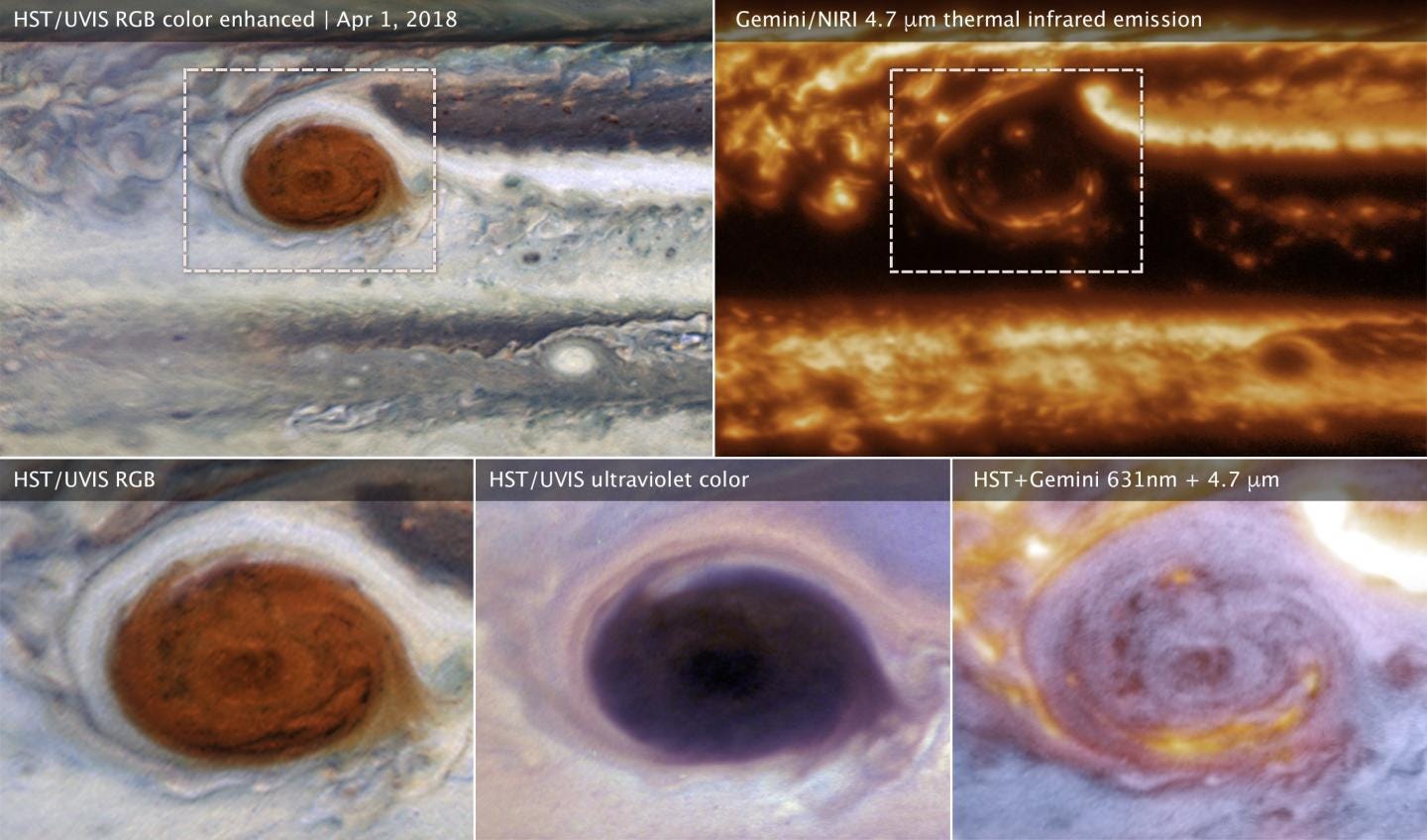Telescopes and Spacecraft Look Deep into Jupiter’s Atmosphere - Astronomy News with The Cosmic Companion May 9, 2020
Using two satellites in space, plus one on Earth, astronomers learn more about the Great Red Spot and other storms on Jupiter.
The Juno spacecraft, Hubble Space Telescope, and the Gemini Observatory in Hawaii join together to explore massive storms on Jupiter.
By James Maynard

The Great Red Spot of Jupiter, seen by the Hubble Space Telescope (HST) and the Gemini Observatory in Hawaii. Image credit: NASA, ESA, and M.H. Wong (UC Berkeley) and team.
Storms on Jupiter are among the most powerful squalls seen anywhere in the Solar System. Now, a new study brings together the Gemini Observatory in Hawaii, the Hubble Space Telescope, and the Juno spacecraft in an effort to understand these behemoth tempests.
Thunderheads on Jupiter can reach 65 kilometers (40 miles) tall, five times as large as their cousins on Earth. Lightning from these storms erupt with three times as much power as the most massive superbolts seen on our own world. Like familiar lightning here at home, lightning on Jupiter produces both visible light and radio waves.
Read more: https://bit.ly/Telescopes-Spacecraft-Jupiter-Atmosphere
Thanks for subscribing!
- James


